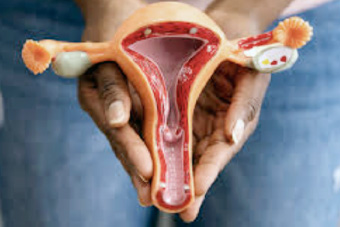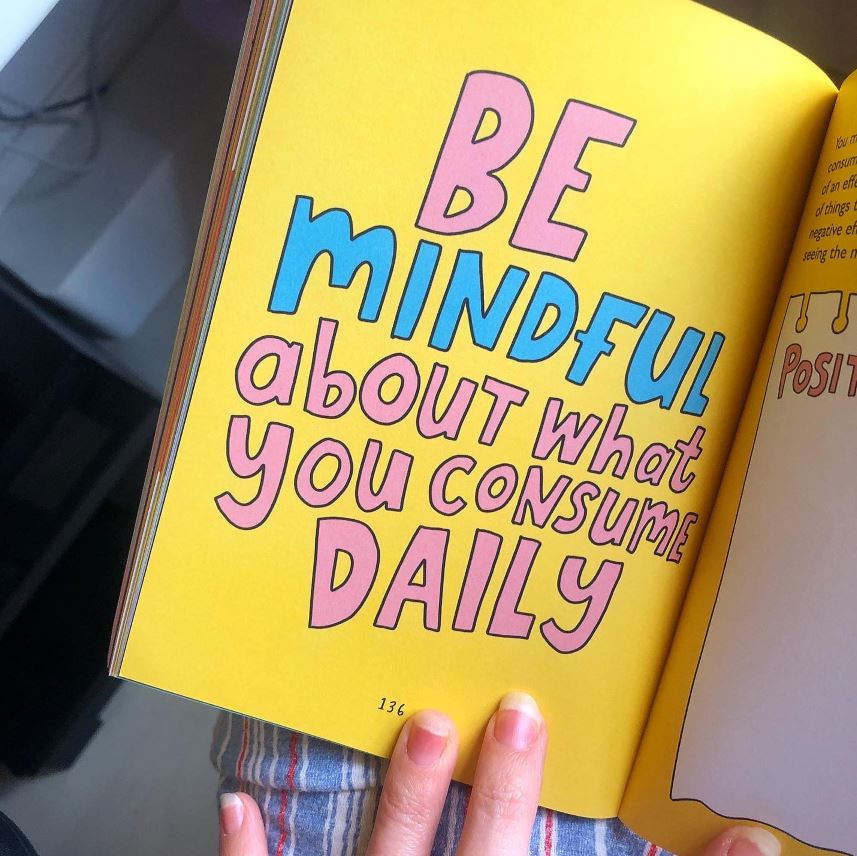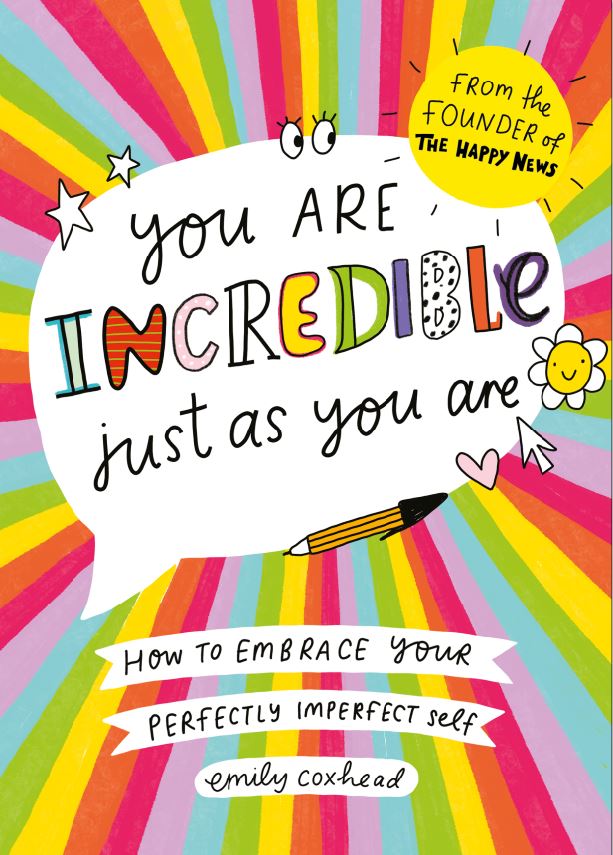This is a subtitle for your new post

The body content of your post goes here. To edit this text, click on it and delete this default text and start typing your own or paste your own from a different source.
This is a subtitle for your new post

The body content of your post goes here. To edit this text, click on it and delete this default text and start typing your own or paste your own from a different source.

Indigenous Peoples’ Day is a holiday in the United States that celebrates and honors indigenous American peoples and commemorates their histories and cultures. It is celebrated across the United States on the second Monday in October, and is an official city and state holiday in Boston and Massachusetts.
On October 8, 2021, President Joe Biden became the first commander in chief to formally recognize Indigenous Peoples’ Day by issuing a proclamation celebrating the holiday. The idea was first proposed by Indigenous peoples at a United Nations conference in 1977 held to address discrimination against Natives, as NPR has reported. But South Dakota became the first state to replace Columbus Day with Indigenous Peoples’ Day in 1989, officially celebrating it the following year.
Indigenous Peoples’ Day Events Happening Around Our Clubs
Articles on the Significance of Indigenous Peoples’ Day
Please note that our clubs will be open on Monday, October 14, but we encourage you to join us as we listen, learn and honor the heritage of Native Americans and Indigenous peoples.

You can listen to this article. Use the player below, download the MP3, or use iTunes.
I never expected to have the desire to deadlift 225 pounds for 20 reps, let alone actually achieve that goal. But today, I finally did it.
A quick aside for those who will say, “ThiS DoeSN’t couNt beCauSE the BaR didN’t COme to a dEaD sTop,” allow me to respond.
First, I don’t care.
Second, I’m not a competitive powerlifter, so I don’t have to pull each rep from a dead stop. This goal was for fun. It was for me.
I’ve shared in prior articles that I like the touch ‘n go style for higher rep sets because I don’t feel fatigue or soreness in my lower back the following days. This was always the case with dead stop reps. (Read the article You Should Ask Yourself “What Else Can I Do?” for more information.)
For the past several months this is the goal I’ve been steadily working toward. And it made me realize why I’ve been able to achieve this goal, among other strength and health goals I’ve set over the years:
I love the process.
You see, that’s the huge misconception people have about achieving health, fitness, and performance goals. They want to lose weight, or perform a pull-up, or squat their bodyweight, or run a half marathon, or improve their cholesterol. Wanting the outcome isn’t the issue.
The issue is not loving the process that is demanded to make those goals a reality. (This is discussed in detail in The 100-Day Reclaim and Lift Like a Girl. Paid links.)
It wasn’t enough for me to say, “I’d love to deadlift 225 for 20 reps.” I had to define the process and focus on the weekly goals I had to hit to get to the desired goal. I created a training regimen, stuck to my plan, and adjusted when necessary. Perhaps one of the most important elements that led to my success: I showed up and did the necessary work even when I did not feel like doing it.
I didn’t always feel like deadlifting, or lifting weights of any sort. But because my goal was more important than the short-term gratification of skipping a workout, I showed up and put in the work. Even if the workouts weren’t stellar, it didn’t matter. I stuck to my plan, I kept feeding the all-important workout habit, and I showed up and did my best on any given day. (This isn’t to say I didn’t use lighter weights or reduce training volume when I knew I needed it. I certainly did because listening to your body’s feedback is critical for long-term success too.)
When my progress stalled, I had to analyze why that was. I didn’t get frustrated. I didn’t get discouraged by the setback. I took this as a necessary challenge to overcome, and I knew I’d come out better by facing it head on, and coming out stronger (physically, and mentally). Was the setback temporary and just a random glitch in performance, or did my programming need to be adjusted?
One tweak I made to my programming: I went from deadlifting once every 10 days to doing a single all-out set every week. I am not suggesting everyone try this (in fact, I would recommend it for few trainees), but for now, it’s been working extremely well for me. The past month and half I’ve seen quicker progress with my single high-rep set.
You must find a way to love the process. Or enjoy it, at the very least.
And there are ways to make this happen. Begin by asking yourself some questions.
Do you really want the goal you seek? Do you really want defined abs and the lifestyle required to achieve that goal, or do you actually want to feel strong and confident in your clothes, and want to forge a more easily sustainable lifestyle to keep the results?
Are you even setting the right goals that will keep you devoted to the required process? Are you setting goals out of obligation? Do you really want to deadlift heavy, or would you prefer to focus on cardio-based activities, or dumbbell or bodyweight exercises? Do what is best for you, not what someone says is “best.” Yes, my idea of a good time is deadlifting heavy weight. It may not be yours, and that’s fine.
How can you make the process more enjoyable? Maybe you need to perform fewer exercises per workout, and give them your full effort and attention. Maybe you need to recruit a workout partner. Maybe you need to try some new exercises and activities until you find something you enjoy. On the nutrition side of things, instead of vaguely “trying to eat healthier,” focus on trying new foods or recipes that you’d enjoy. Learn new cooking techniques or try new restaurants that make achieving that goal easier and enjoyable.
How can you make the goal more meaningful? For the person who needs to lower their cholesterol, the goal of a smaller number on their future lab work may not be super motivating. Perhaps, instead, the focus could be on increasing energy levels, sleeping better, being able to engage more easily in meaningful activities, increasing strength, forging more healthful eating habits, etc. In other words, allow lower cholesterol to be a great side effect from going after more important goals. (This is exactly what I recommend in Screw Fat Loss for those individuals who have chased fat loss for as long as they can remember.)
Instead of obsessing over a goal, find a way to embrace the process required to get there.
If you’re a new mom, you’ve probably noticed your midsection looks different than it did before pregnancy. Maybe you have new stretch marks or lax skin, or perhaps people are still asking when your baby is due.
Some women also notice a feeling of weakness in their abdominal wall or ab muscles, or see bulging along the midline of their abdomen with certain movements (like when getting out of bed). While it’s not painful, it can be disconcerting.
Rest assured: This is all pretty common.
Remember, you just grew and birthed a baby, and your body went through huge changes to accommodate the development of new life. It’s really quite remarkable!
In this article, we talk about the postpartum abdominal wall and diastasis recti. You’ll learn:
Let’s get to it!
*If you have a significant diastasis or other concerns, we recommend consulting with a pelvic health physical therapist or your healthcare provider for an assessment and individualized physical therapy program.
Diastasis recti is the natural separation of the abdominal muscles that occurs during pregnancy.
A diastasis is not a tear, a hole, a hernia, or a sign of inflammation. Rather, it’s a stretching and thinning of the linea alba (the connective tissue joining the two sides of the rectus abdominis muscles). Diastasis recti is commonly diagnosed based on the width of the gap between the muscles (a width of two fingerbreadths or more on a curl up is typically classified as a diastasis).
As far as we know, prenatal diastasis recti can’t be avoided — the linea alba will stretch to accommodate the growing fetus safely. In other words, it’s a natural response to growing a baby. In fact, research has shown that up to 100 percent of pregnant women have a diastasis recti of more than 16 millimeters in their final trimester.1
But what happens in the postpartum period? Truthfully, it varies enormously from woman to woman.
A 2016 study found that at six weeks postpartum, 60 percent of women still had a diastasis recti of at least two fingerbreadths. By one year postpartum, that number dropped to 32.6 percent. The severity of their postnatal diastases ranged from widths of two fingerbreadths (mild) to more than four fingerbreadths (severe).2
To put it simply: For many women, these changes resolve on their own over time. For others, the physical changes may be longer-lasting.
While some degree of abdominal separation is very common postnatally, it can be problematic for women with a wide or deep diastasis. These women may have aesthetic concerns (e.g., you may hear women mention their “pooch”) or may find it more challenging to do higher-level strength activities. For some women with severe diastasis recti, the tissue may become thin enough that it feels like there’s insufficient protection of the internal organs. When you check your diastasis, if the distance between the two sides of the rectus abdominis feels wider than two fingerbreadths, or it feels like you can sink your fingers into the abdomen along the midline with very little resistance (above or below your belly button), it’s a good idea to reach out to a physical therapist for guidance.
How do you know if you have diastasis recti? Learn how to assess your abdominal wall for diastasis recti.
New moms often ask physical therapists if they can heal diastasis recti postpartum. Depending on the woman asking, though, she may use language like…
… all of which are completely valid questions. So let’s talk about what healing means in the context of this article.
Because diastasis recti is often diagnosed based on the distance between the two sides of the rectus abdominis muscles, clinicians used to define “healing” as closing the gap. However, our understanding of diastasis recti has evolved in recent years.
These days, our focus is more on the loss of connective tissue density and the inability to produce tension in the linea alba, which can compromise the function of the abdominal wall. In other words, there’s less concern with reducing the width of the gap and more emphasis on producing optimal ab muscle activation and restoring strength throughout the abdominal wall.3
So, clinically speaking, when we talk about healing diastasis recti, we’re referring to regaining optimal abdominal wall function.
But beyond this clinical definition, healing often means different things to different people. One postpartum woman may envision “healing diastasis recti” as meaning she can return to lifting heavy weights as part of her exercise routine, which might require that both sides of her abdominal wall function optimally. Another may see it as once again feeling comfortable and confident wearing certain clothes or looking in the mirror postpartum.
How much rehab and healing time your diastasis recti requires depends on a whole host of factors that vary from one person to another (e.g., genetics, age, number of pregnancies, width and depth of the diastasis), as well as on your goals.
The good news? We do know that exercise can help improve the strength and function of your abdominal wall — so I’m going to teach you five exercises that are a good option to start with in the early postpartum period.
But before we dive in, let’s run through four quick tips that may help optimize your recovery.
Are you a health or fitness pro? Learn more about training clients with diastasis recti.
There are four important things you can do that may improve your outcomes while exercising with diastasis recti post-pregnancy.
Your posture and the strength of your abdominal wall may affect each other in several ways. Here are some examples:
While there’s no such thing as “perfect” posture, and there’s no direct correlation between posture and something like lower back pain, you can practice a more neutral spine alignment by thinking about stacking your ribs over your pelvis and your diaphragm over your pelvic floor. (However, note again that there’s also no such thing as “perfect” neutral alignment! There is a range of positioning that qualifies as neutral.) See how it feels; for example, do you feel different muscles working? You should feel relatively relaxed, and this position shouldn’t be exhausting to hold. You can also play around with your alignment and see what works best for you as you go through different types of activities.
When the tension and weight of the baby, fluid, and placenta has gone, actively contracting the muscles of the abdominal wall (including the deeper muscles, like the transverse abdominis) can feel challenging. This may leave some women feeling a sense of disconnect with their bodies. Some women have even described it to me as feeling like their abdominal wall is “a balloon that has popped.”
While regaining tension in the linea alba can take some time, working on the connection between your deep abdominal muscles and pelvic floor muscles could help you regain body awareness and improve muscle function.
Many women with diastasis recti tend to underload their abdominal muscles, or in other words, they keep things too easy for too long. Other women may take things in the opposite direction and dive back into activities their bodies aren’t ready for quite yet. As with many things, it’s about finding a balance. In the first few months postpartum, you may want to be a little more conservative with abdominal exercises if you have a significant diastasis (your physical therapist can help guide you), but as the tissue recovery stabilizes, strength and function should take the focus.
Several research studies have shown that women with diastasis recti demonstrate weakness in the abdominal muscles on testing.4,5,6 As you return to exercise, focus on progressively loading your abdominal muscles (gradually increasing the difficulty, intensity, and loading of your ab exercises over time). Give yourself a challenge, but make sure to stop just before the linea alba begins to bulge (see tip #4).
In the absence of individualized recommendations from your physical therapist, I recommend avoiding movements that cause doming, bulging, or sinking in the linea alba and that trigger symptoms of pelvic floor dysfunction (e.g., incontinence, heaviness in the vagina). These symptoms could indicate ineffective management of intra-abdominal pressure and an inability to coordinate the deeper muscle system appropriately for the work you’re doing.
While what can make diastasis recti worse is still unclear, it makes sense to avoid activities that could put unnecessary stress or pressure on the connective tissue or aggravate the pelvic floor.
The following exercises are suitable for women who have a diastasis of up to three fingerbreadths wide and can still feel tension in the linea alba. If you have a more significant gap or a lack of tension (i.e., your linea alba feels soft and your fingertips sink into your abdomen), consult with a physical therapist before proceeding.
But are these the only postpartum diastasis recti exercises you can do? Absolutely not!
There are literally hundreds of exercises that might be suitable for you. However, many women are worried about getting started, so here are some simple options. We recommend combining them with simple functional exercises such as a squat, deadlift, or row.
Complete 2–3 sets of 10–12 repetitions (alternating sides when relevant) for each of the following exercises. (Progressions and regressions for each of these exercises are available in the table in the next section.)
Also, huge thanks to Ellysia Noble, GGS Certified Pre- and Postnatal Coaching Specialist, Labor and Postpartum Doula, and Coach in our GGS Coaching program, for filming these demonstration videos!
The heel slide is a fantastic way to connect your breathing with deep core muscle activation. A simple limb movement, it’s appropriate for the early postpartum weeks but still effectively works the deeper muscles of the abdomen and helps strengthen your core-pelvic floor connection.
How to do heel slides:
As you’re doing this exercise, try to keep your hips stable (i.e., avoid rocking back and forth).
The glute bridge predominantly strengthens the glutes, hamstrings and quadriceps, but when you progress to more advanced versions, it can be a great exercise for challenging the trunk muscles.
Make sure you’re really comfortable with the basic version before progressing to the single-leg variations. In my practice, I’ve found that women with diastasis recti tend to struggle to control their pelvic alignment when performing single-leg glute bridges, so see if you can maintain your pelvis in a horizontal alignment when you move on to asymmetrical exercises.
How to do a glute bridge:
The Pallof press targets the whole abdominal wall, including the rectus abdominis and transverse abdominal muscles, and requires conscious, ongoing control of the position of the ribs over the pelvis. This is a great way to start rebuilding that mind-muscle connection and develop strength. Many women with diastasis recti also struggle with transverse plane strength (i.e., trunk rotation). This exercise will really target that.
How to do a standing Pallof press:
It’s a common misconception that front-loaded exercises are inevitably problematic for diastasis recti. In fact, making your abs work against gravity can actually improve your abdominal wall function when performed correctly. In my practice, I’ve seen good results from adding bird dogs early on, and later progressing to more advanced exercises like planks and push-ups.
As you begin incorporating movements that load the superficial abdominal muscles, just be sure to monitor for symptoms like bulging at the linea alba.
How to do a bird dog:
This upper body exercise can be challenging for many women. Like the Pallof press, it requires conscious control of the position of the ribs over the pelvis throughout the movement. Many women with diastasis recti will notice bulging of the linea alba or upward rotation of the rib cage, so start with a light load and progress when you can do this exercise with good technique.
How to do a banded pull-down:
Recovering from a C-section birth? Get the details on how to return to exercise after a C-section.
While those five exercises are often good options for the early postpartum period, if you’re just getting back into an exercise routine, you may want to start with the simplest version of each exercise and progress from there until you find a variation suitable for you. You can use the following table to determine how to regress and progress each movement.
An exercise is at the right level if it feels challenging, but you don’t see any of the symptoms we discussed. If you develop symptoms and they’re not immediately resolved by regressing or modifying the movement, it’s time to stop that exercise.
Click here for a downloadable PDF of the table above.
Because there isn’t a whole lot of evidence-based research on what absolutely makes diastasis recti better or worse, many physical therapists and personal trainers tend to be more cautious when programming for women with a wide abdominal separation.
In many ways that’s a good thing, but in some cases, that level of caution can lead to blanket statements about avoiding certain ab exercises at all costs (e.g., “Don’t ever do sit-ups!”). Such statements may end up doing new moms a disservice.
I’m all about adapting instead by using regressions and modifications rather than avoiding altogether.
By staying aware of your body and listening to its cues, you can typically take advantage of a wide range of exercises that can help restore the function of your abdominal wall and potentially improve the appearance of your diastasis recti. (If you want some help with your exercise routine, you can check out our Moms Gone Strong program, which includes 90 days of done-for-you workouts tailored for every stage of pregnancy and postpartum!)
And remember: Recovery takes time. Your body just went through a huge transformation, and it will need some time to adjust. Be patient with yourself — you’re doing great!

Ovarian cancer is one of the most serious forms of cancer that can affect women, often referred to as a “silent killer” due to its subtle symptoms that are easy to overlook. As we observe Ovarian Cancer Awareness Month this September, it’s crucial to educate ourselves and others about the risks, symptoms, and the importance of early detection in combating this disease. At Women’s Health Associates, we are committed to providing the necessary care and resources to help women stay informed and proactive about their health.
Ovarian cancer occurs when abnormal cells in the ovaries begin to multiply uncontrollably and form a tumor. If left untreated, the cancer cells can spread to other parts of the body. There are several types of ovarian cancer, with epithelial ovarian cancer being the most common. Other types include germ cell tumors and stromal tumors.
One of the most challenging aspects of ovarian cancer is that it often goes undetected until it has progressed to an advanced stage. This is partly due to the fact that the symptoms are often vague and can easily be mistaken for other common conditions.
While the exact cause of ovarian cancer is not fully understood, there are several risk factors that may increase a woman’s likelihood of developing the disease:
One of the reasons ovarian cancer is often diagnosed late is because its symptoms can be easily confused with other less serious conditions. However, being aware of the symptoms and acting promptly can make a significant difference. Common symptoms of ovarian cancer include:
These symptoms are often persistent and represent a change from what is normal for your body. If you experience these symptoms for more than a few weeks, it’s important to consult with a healthcare professional.
Dr. Reagan Wittek, one of our leading OB-GYN specialists, emphasizes the importance of not ignoring these signs: “It’s easy to dismiss symptoms like bloating or pelvic pain as something minor, but if they persist, it’s essential to seek medical advice. Early detection is key to improving outcomes in ovarian cancer.”
Early detection of ovarian cancer significantly increases the chances of successful treatment. Unfortunately, there is no reliable screening test for ovarian cancer, which makes awareness of symptoms and risk factors even more critical. Regular pelvic exams, ultrasounds, and, in some cases, blood tests like the CA-125 can help detect abnormalities that may indicate ovarian cancer.
At our clinic, we encourage all women, especially those with higher risk factors, to stay proactive about their health. Regular check-ups and open communication with your healthcare provider are vital.
Dr. Wittek advises, “Don’t wait for your annual exam if you notice something unusual. We are here to help you navigate any concerns and provide the appropriate screenings and tests to ensure your peace of mind.”
Ovarian Cancer Awareness Month is a time to remind ourselves of the importance of being vigilant about our health. If you or someone you know is at risk, or if you’re experiencing symptoms that concern you, don’t hesitate to reach out to our clinic. Our team is here to provide the care and support you need.
Early detection can save lives. By staying informed and proactive, we can work together to fight ovarian cancer and ensure a healthier future for all women.
If you have any concerns about your health, don’t hesitate to call our office at 913-677-3113 to schedule an appointment or speak with a Nurse. Our team is here to support every aspect of your wellness journey.
This article is for informational purposes only and does not constitute medical advice. Consult with a healthcare professional for personalized advice.
More Information
Event Highlights
Purchase Ticket
Panelists
Further Questions

$20 Ticket Price
Purchase Ticket
Join us for a special screening of The M Factor, a compelling documentary that uncovers the realities of menopause, followed by an enlivening panel discussion with women’s health experts who will answer your most burning questions about menopause and what’s coming next in menopause health care. Through real stories and expert insights, this film aims to break the silence around a life stage affecting millions of women.
Key Details
October 18 2024 via Zoom
6:00 PM – 9:00 PM EST

Women of all ages, health care providers, and anyone interested in women’s health.
Gain knowledge, dispel myths, and join the movement to break the stigma surrounding menopause. This event offers valuable insights and actionable advice in a supportive and educational setting.

Rebecca Dunsmoor-Su, MD, MSCE, MSCP completed medical school, earned her Masters degree in Clinical Epidemiology, and completed OBGYN residency at the University of Pennsylvania. She moved to Seattle in 2005 to take a position as Assistant Professor of Obstetrics and Gynecology at the University of Washington. In 2013 she moved to Swedish Medical Center, First Hill campus and started to build her menopause focused practice. In 2019 she transitioned to gynecology and menopause care full time, founding the Women’s Wellness and Gyn Specialties Clinic at Swedish Medical Center, where she was Medical Director of Menopause services from 2019 to 2023. She joined Gennev.com in 2017 as Director of Health to help build it into the premier online clinic for women in midlife and menopause, and in 2019 became their Chief Medical Officer, transitioning to full time in 2023. She is also a Medical Director at Seattle Clinical Research Center where she serves at primary investigator on many studies. She served a term as an editor for Obstetrics and Gynecology from 2016-2020. She is a Menopause Society certified menopause practitioner and a fellow of ACOG. Her focus in practice and research is on holistic, evidence-based care for women in midlife and menopause.

Maria Uloko, MD (she/her)
Urology, Comprehensive Sexual Medicine, Prosthesis and Reconstruction
CEO MUMD Sexual Medicine LLC
CEO/Founder VULVAi
Dr. Maria Uloko is a board-certified urologist specializing in comprehensive sexual health, reconstruction, and prosthetics. She is one of only seven urologists worldwide skilled in managing sexual dysfunction across all genders, offering expertise in treating vulvar sexual dysfunction, sexual pain, low libido, erectile dysfunction, symptomatic menopause, atrophic vaginitis, urologic prosthetic surgery, Peyronie’s disease, and hormone replacement therapy. Dr. Uloko champions improving her patients’ quality of life through a compassionate, inclusive, and shame-free approach to sexual health, empowering them to take control of their well-being.
Formerly a clinical professor at UCSD, Dr. Uloko transitioned to found MUMD Sexual Medicine Consulting and VULVAi, an AI-driven tool that supports patients and clinicians diagnose vulvovaginal issues, including pain, recurrent UTIs, interstitial cystitis, and infections. As an international award-winning researcher, she gained recognition for her seminal work on clitoral anatomy and as the founder of the first urologist-led vulvar sexual health clinic in the U.S. Her research focuses on debunking sexual health misinformation and advocating for medical education reform, particularly in vulvar anatomy and physiology.
Dr. Uloko’s academic background includes a comprehensive sexual health fellowship at San Diego Sexual Medicine and Scripps, residencies in urology and general surgery at the University of Minnesota, and a medical degree from the University of Missouri-Kansas City. She serves as an associate editor for the Journal of Urology and co-associate editor for the Video Journal of Urology, evidencing her leadership.

Image courtesy of the office of Congresswoman Lisa Blunt Rochester
Biography courtesy of Congresswoman Lisa Blunt Rochester
Congresswoman Lisa Blunt Rochester represents Delaware in the U.S. House of Representatives and serves as an Assistant Whip for House Leadership. Lisa sits on the House Committee on Energy and Commerce. The committee has broad jurisdiction over health care, the environment, commerce and trade, energy policy, telecommunications, manufacturing, and consumer protection.
As the Energy and Commerce Committee’s only former statewide health official, Lisa understands health care from a number of different perspectives – as an implementer at the Delaware Department of Health and Social Services, negotiator while serving as State Personnel Director, and advocate as CEO of the Metropolitan Wilmington Urban League. Lisa is focused on reducing the cost of health care and prescription drugs for middle-class families, addressing the disparity in outcomes for communities of color, and tackling our nation’s opioid and addiction epidemic. She serves as a Member of the Bipartisan Heroin Task Force, comprised of more than 100 members united with the common goal of tackling opioid addiction.
Lisa is a leading voice in Congress on economic and future of work-related issues. As former Secretary of Labor and State Personnel Director, Lisa leverages her professional experience to advocate for legislation that boosts start-up business growth, and removes barriers for citizens re-entering society. She is a Co-Chair of the New Democrat Coalition’s Future of Work Task Force. She is also the founder of the Congressional Future of Work Caucus.
In the 115th Congress, Lisa was a member of the House Committee on Agriculture – the first Delawarean to serve on the committee in over 120 years. In this role, she helped craft the 2018 Farm Bill, which is a five-year re-authorization that extends U.S. Department of Agriculture programs related to the farm safety net; nutrition programs that feed children, seniors, people with disabilities, and families who rely on the social support programs; land-grant and 1890 universities; and agriculture research.
As a member of the Congressional Progressive Caucus and a strong proponent of reforming our criminal justice system, Lisa introduced first-in-the-nation legislation, the Clean Slate Act, sealing the federal records of former nonviolent offenders that remain crime-free and have earned a second chance. This bill would provide new opportunities for Americans to earn a good-paying job, pursue education and training, and rent or own a home. According to estimates by the Center for American Progress, the passage of the Clean Slate Act could boost the U.S. economy by as much as $87 billion per year.
Traveling up and down the state, Lisa is an advocate for the needs of every community, which informs her work in Washington. Having met with homeowners in the South Shore Marina development in North Bethany Beach, she learned of an error in the U.S. Fish and Wildlife Service’s coastal mapping unit for the town – preventing homeowners from taking advantage of the National Flood Insurance Program and FEMA aid in the event of a disaster. Turning their concerns into action, Lisa reached across the aisle to work with Democrats and Republicans across the country with similarly affected mapping units and introduced the Strengthening Coastal Communities Act. She worked with allies in Delaware and Washington to help usher this critical piece of legislation into law – aiding homeowners and setting aside hundreds of acres for environmental protection.
With deep roots in the First State, Lisa grew up in Wilmington, graduated from Padua Academy, and worked her first job at the McDonald’s on Market Street. She graduated from Fairleigh Dickinson University with a degree in International Relations and put herself through graduate school as a working mom – earning a master’s degree in Urban Affairs and Public Policy from the University of Delaware.
Lisa began her distinguished career in public service as an intern and later Caseworker in a congressional office where she helped Delawareans with their Social Security benefits, disability insurance claims, IRS disputes, and housing needs. Lisa would go on to serve in the cabinets of two Delaware governors and as CEO of the Metropolitan Wilmington Urban League – an action-oriented, public policy research think-tank.
Lisa also served as the Senior Executive Leadership and Systems Manager for the Institute for Community Inclusion at the University of Massachusetts Boston where she advocated for people with disabilities in their struggle for equal opportunity and civil rights. During this time, Lisa helped expand the Institute’s global footprint and advised state agencies and employers. In part due to Lisa’s work, she helped build the Institute into a fully-fledged college at the university, the School for Global Inclusion and Social Development — focused on the inclusion of all people.
Lisa currently resides in Wilmington, Delaware near her adult-aged children, Alex and Alyssa, as well as her daughter-in-law, Ebony.

Denise Hyater-Lindenmuth
NWHN Executive Director
Denise Hyater-Lindenmuth has worked in the Washington DC area in both nonprofit and for-profit industries for nearly 30 years. Her nonprofit leadership roles included creating ground-breaking community-based programs where her efforts were recognized internationally and led organizations such as Brain Injury Services and the American Cancer Society for the National Capital Region. She also served in leadership roles for national/international public relations firms representing healthcare clients and health interests. She has extensive experience serving as spokesperson in many of her leadership roles.
Denise’s leadership style is based on the philosophy of community service and is firmly driven by data and results. She has proven successes with leading boards and people through change and overcoming challenges while remaining mission focused. Critical areas of importance include mission and strategy, governance, financial management and development, operations, and marketing.
She earned her MBA at George Washington University in Washington D.C., a master’s degree in Community Health Education at Trinity Washington University, in Washington, D.C., and a bachelor’s in Public Relations/Marketing at Howard University, in Washington, D.C. Denise also received a certificate in strategic nonprofit management from Harvard University. As a fifth-generation Washingtonian, she lives with her husband, Philip, in the District of Columbia. They have three children who are successfully “adulting”.
For more information, contact Laura Tucker at ltucker@nwhn.org
The post Pulling Back the Curtain on Menopause: A Special Screening of The M Factor Menopause Documentary first appeared on NWHN.
Patricia lost 9.5 inches, weight loss of 12.4 pounds and more than 6% body fat all during a struggle with perimenopause. “I gained so much confidence in myself and I am able to reframe my thoughts from negative to positive. My new favourite saying is “I don’t do that anymore” I’m no longer afraid of trying something new.” Patricia has transformed into a confident athlete and leader. She found success in small Group Training and in Studio classes.
I found success in Trina’s small Group Training and In Studio classes.
I became a Fit4Females member in 2011 and rejoined in 2022 to become stronger, gain more energy, eat healthier, lose weight, build muscle mass, and gain confidence.
From the moment you walk into a class with Trina, her team, and the members, you feel so welcome, like you are family. I love how every class is different and you are always given a modification if one is needed.

I have gained so much confidence in myself. I am able to reframe my thoughts to be positive. My new favourite saying is “I don’t do that anymore” I’m no longer afraid of trying something new.”
I am happier, stronger, and have definition in my arms, which I get complimented on all the time. Like Trina says “I am the new Patricia 2.0.”
Her Fit4Females tank top no longer fits, so we gave her a new one!
I love the energy that each Team Leader brings to every class. Trina is so knowledgeable and will always have an answer for you. The Team Leaders are always around to help when you need them.
When I started my journey in perimenopause, I had a very rough two months. Trina was by my side every step of the way. Checking in on me, giving me positive encouragement and she would always tell me “this is just a phase, it will pass.” If it wasn’t for Trina, I would have given up on myself.
Being able to row my PB (personal best), hip thrusters, flipping a tire, rowing and dead hangs. Who would have thought I would be able to do all of these and more!
I have gotten so many compliments on the muscle mass I have gained.

Just do it, go for it, it will change your life! The community of women you meet at Fit4Females and become friends with is amazing.
Don’t wait any longer, do it. You won’t regret it. Make yourself a priority!
I have been working on a goal, to move more. I sit at a desk all day and now have a timer set for every hour to get up and walk around the office. It has made such a difference in how my body feels after a long work day.
Joining Fit4Females is the best thing I have done. Trina has become such an important part of my life. She has thought me the discipline I need to work harder and accomplish my goals. No one could top her as MY coach.
More than the weight loss, Patricia went from low confidence to pushing hard, crushing goals she never thought were possible and inspiring our Members as a Leader herself. Leave a comment below for Patricia. Transformations from the inside out are long lasting. We can’t wait for your health journey to start with us. Her transformation is more than just weight and inches loss. Her confident stance is so powerful and translates to every aspect of her life.
Trina Medves

Check out the Schedule and choose to make yourself a priority by joining one of our award-winning Programs. We offer Adults Only Programs and Online Programs. Try a Free Class now!

As we approach the 2024 election, the stakes couldn’t be higher. This year has already been marked by harmful federal and state policies and Supreme Court decisions that affect our health, autonomy, safety, and even the foundations of our democracy. The challenges we face as a community—especially the recent attacks on reproductive freedoms—underscore the need for transformative leadership. The limitations placed on abortion access, family planning services like in vitro fertilization (IVF), maternal care, rural healthcare and more have disproportionately harmed Black women, worsening existing health disparities. We must vote like our lives depend on it—because they do.
At the Black Women’s Health Imperative (BWHI), we are committed to addressing these urgent issues through innovative programs, research, policy, and advocacy that promote the health and wellness of Black women and girls. To support our community during this crucial election season, we are proud to present the Black Women Vote 2024 Health Policy Voters Guide.
This guide provides a clear framework for understanding the pressing issues in this year’s election that will directly impact the health and well-being of Black women. It is organized into five pillars:
Find yourself in a slump or bombarded with negative thoughts? Founder of The Happy News, Emily Coxhead reveals five tips on how to be happier
Firstly, there is no simple way ‘to be happier’, happiness doesn’t come from one particular place or person or thing (although, cups of tea and lying on a beach would definitely be top of the list for me).
We need to try and steer away from this idea that after our next holiday, pay-rise, new purchase we will be happier because if there is an underlying problem, niggling thought or feeling or generally just a reason to be unhappy then that will still be there no matter how much stuff gets in the way.
we can’t wake up one morning worry and stress-free, that is not how the world works
Of course, it’s not as easy as finding total peace and happiness in yourself, we can’t wake up one morning worry and stress-free, that is not how the world works.
What we can do is try to understand the underlying issues and try to build our own strength and resilience so we can firstly recognise our thoughts and feelings, but then also try to understand and work through them whether that’s writing them down or talking to somebody you trust.
It can be incredibly important and helpful if you’re able to share the load and just take away a bit of the weight you’re carrying around.
Here are five very basic tips which may help you find a little happiness now or later down the line…
Especially now more than ever we are constantly bombarded with terrifying headlines and statistics not to mention scrolling through social media looking for glimpses of positivity and often being met with a whole heap of negativity, comparing and not feeling good enough.
Know that it’s okay to turn off news notifications if you’re feeling overwhelmed, it’s also absolutely okay to unfollow or ‘mute’ people on social media who aren’t making you feel good.
In the same way that you have (or should have) control over who you have around you in real life you also must apply this to the ‘virtual world’ too.


I get it, it’s not as simple as just shrugging off your boss’s comments or not taking to heart something a friend has said, these are all very normal situations which we can often find difficult to process.
However, as you go through life there will be many people who come and go and the truth is that you just cannot and will not please all of the people all of the time, this is something people say to me a lot, it’s one of my Dad’s favourite sayings but it’s still something I have to remind myself of constantly.
you just cannot and will not please all of the people all of the time
I think once you can realise and admit that there are certain things or ways or traits that some people simply just won’t like or understand about you then it makes it slightly easier to process if you do lose contact with somebody whether that’s gradually or suddenly.
Talking to people is so important and a huge way we figure things out and move through sticky situations even if it’s really difficult to do so.
However, sometimes it just doesn’t work out and that may not be anything specifically to do with either person and is likely to be totally out of your control.
We can quickly and often unknowingly get trapped in these ideas of what should make us happy or what makes our friend or partner happy and it’s really important to sometimes step back and think about what makes you happy, when was the last time you did something just for you?
Whether it’s swimming or baking or running or painting, whatever brings you a little happiness, do more of that.
READ MORE: Mental health fixes – 13 women share what makes them happy


We live in a world which unfortunately isn’t always designed to make us happy, it’s far quicker to point out our flaws – that we should have less wrinkly skin, fewer stretch marks or shinier hair.
Every little bit of us is what makes us who we are and tells our story and makes us different to the next person, it’s not always easy but we should be SO proud of that.
Change doesn’t need to be ground-breaking or news-worthy, often the smallest of things have a positive difference
Our body is the most incredible thing and looks after us in ways we can’t comprehend at times, we shouldn’t be constantly berating it or considering how it could be or look better.
We would never do that with our mum or our friends so why do we do it to ourselves?
I know we hear this a lot; ‘be the change you wish to see’ but it’s such a simple message which I think every single one of us could get on board with.
be the change you wish to see
What would make the world a better place? I can think for one, if we were all a tiny bit kinder to ourselves and others it would make a huge difference.
There are so many very small things we could do which would make a big impact if more of us did them; from picking up pieces of litter, writing to our grandparents or friends we haven’t seen for ages or buying a colleague their favourite chocolate bar.
Change doesn’t need to be ground-breaking or news-worthy, often the smallest of things have a positive difference far greater than you will realise, it makes you feel good, it makes the other person feel good and it has a ripple effect even further than that.


You Are Incredible Just As You Are: How To Embrace Your Perfectly Imperfect Self by Emily Coxhead is available to buy on Amazon in the US and in the UK.
Subscribe to The Happy News, for every 2 newspapers we send to subscribers we will send one to a school in the UK so children can hear about the good things going on in the world.
Like this article? Sign up to our newsletter to get more articles like this delivered straight to your inbox.
How nourishing and delicious is pasta?!
I’m a huge fan of this classic Italian staple, so we’ve created three pasta recipes that celebrate its incredible versatility. Each dish is a vibrant blend of flavours, colours, and textures, packed with nourishing protein to keep you satisfied and energised throughout the day.
Whether you’re looking to create a quick weeknight dinner or meal prep for your work lunches, these recipes are designed for ease and enjoyment.
With a few simple ingredients and a nourishing protein choice, you can transform your pasta into a wholesome and satisfying meal – and your lunch break into a trip to Italy!
Buon appetito!
Jess x

1. Feta, Pumpkin & Capsicum Pasta
Who could forget the viral baked feta pasta trend? We’ve spiced things up with our own twist – baked feta, delicious pumpkin, and vibrant capsicum (packed with Vitamin C!). This is a quick and easy weeknight recipe, baked in one tray and blended into a beautifully creamy pasta sauce. Serve as is with fresh pasta, or add in your protein of choice!
Time to cook: 45, Serves: 3
Ingredients:
To serve:
Method:
Preheat the oven to 200°C or 395°F.
Place the feta, pumpkin, red capsicum and garlic into a baking dish. Drizzle the extra virgin olive oil over the top and season with black pepper and dried oregano. Add the garlic cloves to the dish.
Bake in the preheated oven for 40 minutes or until the vegetables are cooked through.
Whilst the vegetables are cooking, prep the pasta according to the packet instructions. Make sure to reserve 1 cup of pasta water to add to your sauce.
Once the vegetables are cooked, transfer them to a blender or food processor. Add in the reserved pasta water and an extra drizzle of olive oil. Blend until smooth and creamy. Season to taste with sea salt and freshly ground black pepper.
Place the freshly cooked pasta into a large bowl and pour the sauce over the top. Finish with some freshly grated parmesan cheese, sliced basil leaves and chilli flakes, if using.

2. Pesto Broccoli Pasta
Delight in our nutrient-dense pesto pasta, supercharged with flavour! Our vibrant version brings together immune-boosting broccoli with a fresh basil pesto for your dose of antioxidants and healthy fats. We used our entire pesto mix for a thoroughly coated pasta, however you can choose to use half the quantity, and freeze the remainder for another day. Serve as is, or gently toss through your favourite protein.
Time to cook: 20, Serves: 3-4
Ingredients:
To serve:
Method:
To make the pesto, combine the basil leaves, pine nuts, grated parmesan, garlic cloves and extra virgin olive oil in the bowl of a food processor. Add a pinch of sea salt and some black pepper and pulse until the pesto comes together.
Cook the pasta as per the packet instructions. When the pasta has 2 minutes of cooking time left, add the broccoli florets to the pot. Just before draining, scoop out 1 cup of starchy pasta water and set aside.
Drain the pasta and broccoli and transfer to a serving bowl. Add the pesto and half of the reserved pasta water. Use tongs to toss the pasta together and evenly coat it in the pesto. You can add some more pasta water if needed.
Squeeze the lemon juice over the top and garnish with extra grated parmesan cheese, black pepper, a little sea salt and chilli flakes, if using.

3. One Pan Creamy Salmon Risoni
This creamy pasta dish is the definition of comfort food, whilst also being super nutritious. When cooked, risoni has a risotto-like texture. We’ve paired it with salmon for those omega fats, lemon, green veggies, capers and a dash of cream cheese. The best part? Only one dish is needed! For a vegetarian option, simply omit the salmon.
Time to cook: 25, Serves: 2-3
Ingredients:
To serve:
Method:
Heat 1 tbsp extra virgin olive oil in a non-stick pan over medium-high heat. Season the salmon on both sides with sea salt and black pepper. Cook for 5 minutes on one side before flipping and cooking on 3-4 minutes on the other side. Remove from the pan and cover to keep warm. Cook time will depend on the size of your salmon fillets.
Add the remaining olive oil to the pan along with the leek, garlic and chopped parsley stems. Sauté for 3-4 minutes or until the leeks have softened and start to caramelise.
Add the risoni and vegetable stock to the pan. Bring to the boil and then reduce the heat to a simmer for 5 minutes. Next add the broccoli and frozen peas and simmer for a further 5 minutes or until the risoni is cooked through.
Remove from the heat and stir through the cream cheese and lemon juice. Add the salmon back to the pan and flake. Garnish with lemon zest, capers and parsley leaves.